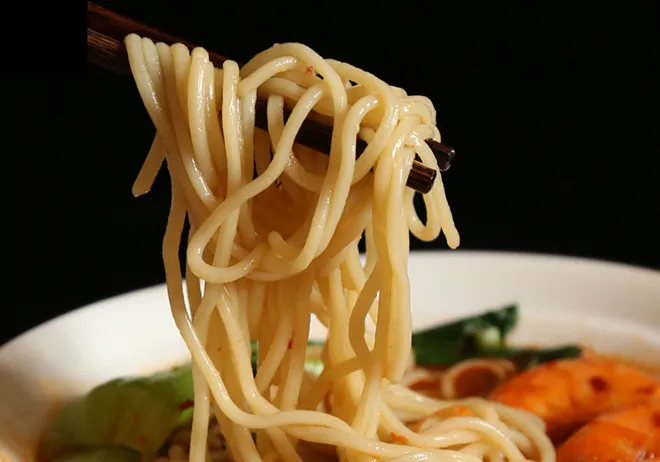Exploring the Delightful World of 100% Soba Noodles and Their Benefits
The World of 100% Soba A Dive into Tradition and Taste
Soba, a traditional Japanese noodle made primarily from buckwheat flour, has been a staple in Japanese cuisine for centuries. The term 100% soba refers to noodles made entirely from pure buckwheat, without any wheat flour additives. This distinction not only highlights the authenticity and quality of the soba but also emphasizes the health benefits and unique flavors that come with it. In this article, we will explore the rich history of soba, its cultural significance, health benefits, and ways to enjoy this delicious dish.
The History of Soba
Soba noodles have a long and storied history in Japan. They are believed to have originated in the Edo period (1603-1868), although references to buckwheat consumption date back even further. Initially consumed for their nutritional value, buckwheat noodles quickly became a beloved meal among the Japanese populace. By the Meiji era (1868-1912), soba was firmly established as a street food favorite, served in small restaurants called soba-ya, where patrons could enjoy a hot bowl of noodles, often accompanied by broth and various toppings.
The preparation of soba is an intricate art. Traditionally, the buckwheat is ground into flour, mixed with water, and kneaded to form a dough. This dough is then rolled out and cut into thin strands. The finesse in making great soba lies in the skill of the artisan, known as soba chef, who can create an ideal balance of texture and flavor. True soba enthusiasts often appreciate the nuances of the noodle's thickness, elasticity, and chewiness, which are crucial for a perfect soba experience.
Cultural Significance
Soba is more than just a food item; it holds cultural significance in Japan. It is often eaten on special occasions, such as New Year’s Eve, when families gather to consume Toshikoshi soba, which symbolizes the passage into a new year. The long noodles represent longevity and prosperity, making them a meaningful dish to enjoy with loved ones.
In addition to its symbolism, soba has regional variations across Japan, each reflecting local tastes and ingredients. For instance, in Nagano, where buckwheat is abundantly grown, you can find freshly made soba served with unique dipping sauces, while in Kyoto, cold soba is often paired with seasonal toppings like mountain vegetables.
100 soba

Health Benefits of 100% Soba
Beyond its cultural importance, 100% soba is recognized for its numerous health benefits. Buckwheat is naturally gluten-free, making soba a suitable alternative for individuals with gluten sensitivities or celiac disease. Additionally, buckwheat is rich in essential nutrients, including vitamins B and E, magnesium, and dietary fiber. It is also known for its potential to lower cholesterol and improve cardiovascular health due to the presence of rutin, a flavonoid that strengthens blood vessels.
Moreover, the complex carbohydrates in buckwheat provide sustained energy, making soba an ideal meal for busy individuals and athletes alike. The low glycemic index of soba means it can help regulate blood sugar levels, contributing to overall health and well-being.
Ways to Enjoy Soba
There are countless ways to savor 100% soba noodles. One popular method is to serve them cold with a dipping sauce called tsuyu, made from soy sauce, mirin, and dashi. This refreshing dish emphasizes the pure, nutty flavor of the soba.
Alternatively, soba can be served hot in a soup. A simple broth made with dashi, soy sauce, and scallions enriches the soba noodles, making for a comforting meal, particularly during the colder months. Top it off with a poached egg or some vegetables for added nutrition and flavor.
In conclusion, 100% soba is more than just a dish; it is a celebration of tradition, health, and taste. As we explore the depths of Japanese cuisine, it is essential to honor the artistry of true soba-making and appreciate the myriad ways this humble noodle can nourish both body and soul. Whether enjoyed in a bustling soba-ya or crafted at home, it remains a timeless culinary delight.
-
fast-cook-noodles-convenient-staples-for-modern-lifestylesNewsAug.23,2025
-
italian-noodles-versatile-staples-of-global-cuisineNewsAug.23,2025
-
italian-noodles-a-timeless-culinary-heritageNewsAug.23,2025
-
instant-cold-noodles-a-refreshing-culinary-convenienceNewsAug.23,2025
-
buckwheat-noodles-the-art-and-nutrition-of-handmade-sobaNewsAug.23,2025
-
low-calorie-soba-noodles-a-nutritious-choice-for-healthy-eatingNewsAug.23,2025
-
The Wholesome Delight of Organic NoodlesNewsAug.15,2025
Browse qua the following product new the we







